´Eco-berms` replace concrete to boost riverbank biodiversity near german hydropower stations
AN INNOVATIVE APPROACH TO DAM REHABILITATION AND THE ECOLOGICAL IMPROVEMENT OF RIVERBANKS
The main objective of the project INADAR (Innovative Approach for Dam Restoration) along the river Danube in Bavaria, Germany, is combining flood protection and ecology through the implementation of so-called “eco-berms”: dams made from natural materials that allow for a rehabilitation of existing dams and the improvement of flood protection. At the same time, precious new habitat for flora and fauna can be created by using dead wood and other structural elements along the banks. As a result, the population and diversity of plant species and fish in the area has grown considerably.
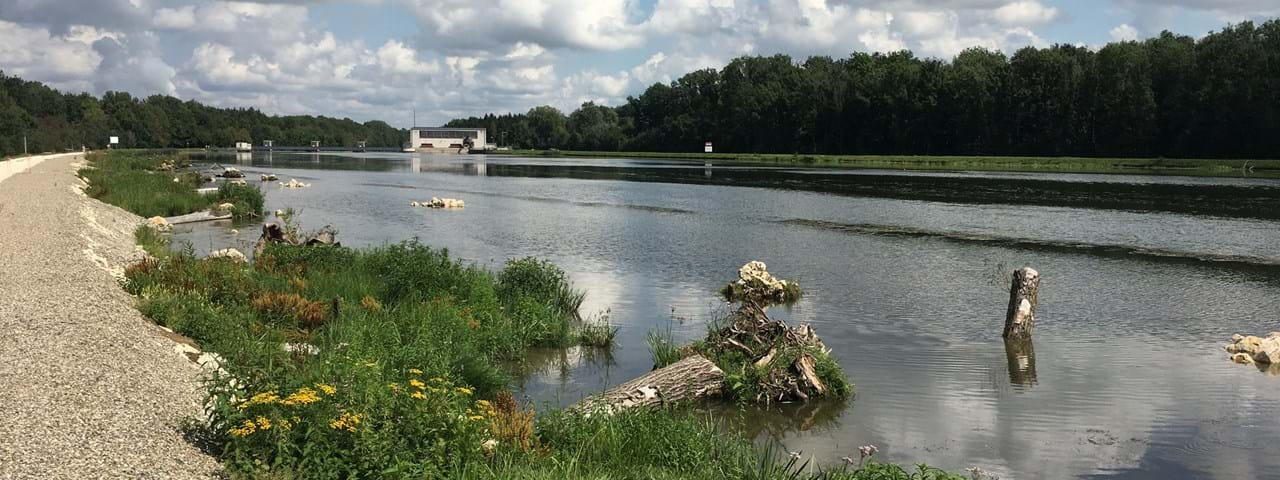
Role model for future river projects in Europe The environment-friendly approach to dam rehabilitation with eco-berms has been tested successfully and could be adapted for implementation along thousands of kilometres of riverbanks in Europe that meet the requirements for eco-berms. Source: Inadar.eu
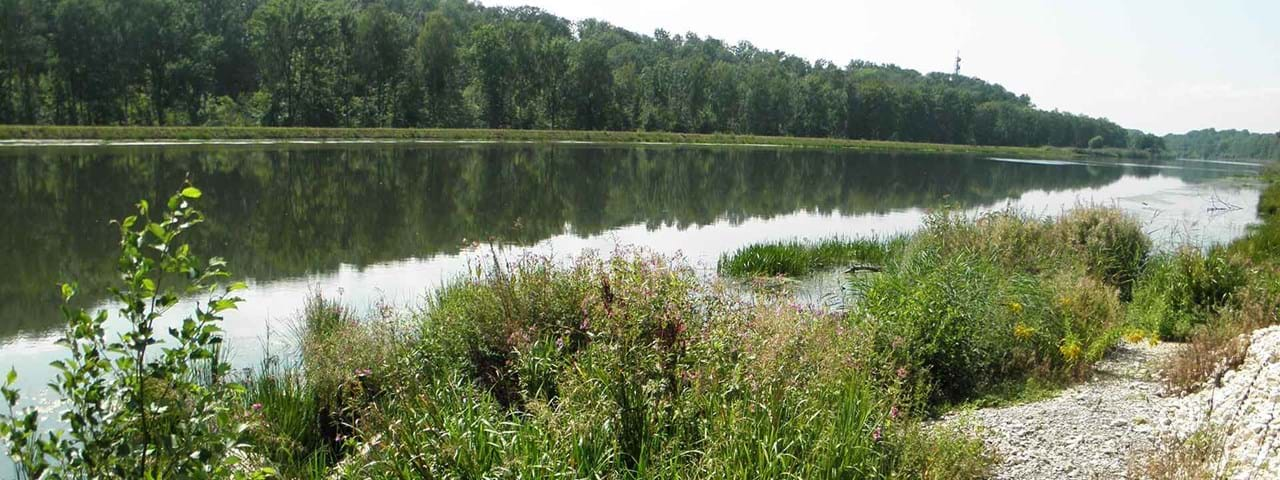
In 2015, the project started with the construction of two pilot sites near the power stations Oberelchingen und Offingen along the river Danube in Bavaria, Germany. The work was undertaken by LEW Wasserkraft GmbH, and has since been implemented at several other sites. Source: Inadar.eu
ENVIRONMENTAL ISSUES CAUSED BY RIVER DAMS AND DAM REHABILITATION
Today, the banks of most water bodies with dams are usually covered with wave breakers made of concrete. However, these dams do not provide a suitable ecological habitat. In addition, hybrid waters (common at rivers with dams) tend to have similar ecological issues. As they are usually neither flowing nor standing waters, neither limnophilic nor rheophilic species can find a suitable habitat there. Only less specialised “common species” can adapt and use these habitats.
In addition, only few species of flora and fauna can settle on the concrete slabs built into the river banks, which leads to an absence of natural vegetation along the river banks. Classical dams interrupt contact with the surrounding areas both hydrologically and ecologically.
Source: inadar.eu
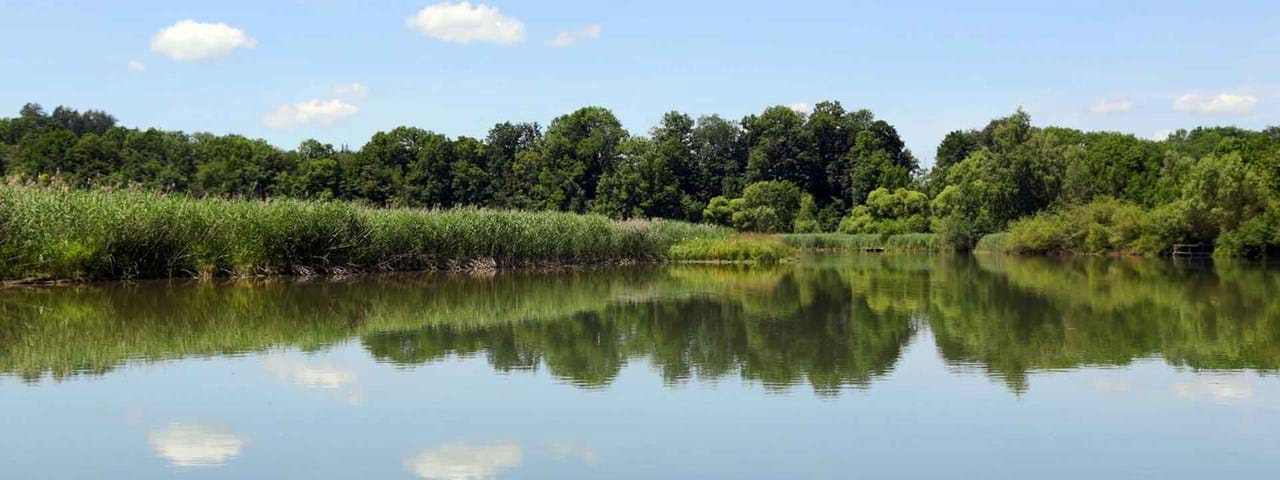
Tried, tested and ready or implementation across the continent. The environment-friendly approach to dam rehabilitation with eco-berms has been tested successfully and could be adapted for implementation along thousands of kilometres of riverbanks in Europe that meet the requirements for eco-berms. Source: Inadar.eu
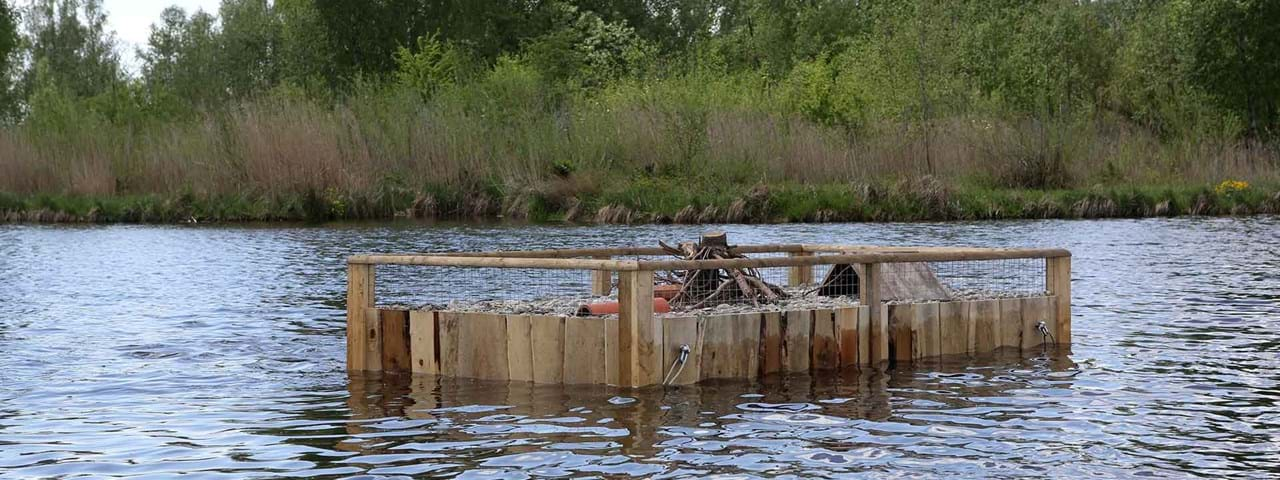
An artificial island constructed from non-toxic scrap construction materials adds further real estate to the berms on the riverbanks. Eco-berms are suitable for dams where the river profile is not critical for flood protection, for example in water basins of hydropower stations and floodgates or at inland waterways. Source: Inadar.eu
THE SOLUTION? ECO-BERMS!
INADAR links the requirements of flood protection with nature conservation and connects the river with the riparian and alluvial forests. At the core of this new approach to dam restoration are the so-called „eco-berms“ built from natural resources. Not only are they designed to rehabilitate the dam and raise it if necessary but also to improve the ecology in the riparian zones.
Eco-berms are suitable for dams where the river profile is not critical for flood protection, for example in water basins of hydropower stations and floodgates or at inland waterways.
In contrast to classical dam raising, the necessary widening can be carried out on the water side of the dam. This way, the eco system on the air side of the dam is protected. Eco-berms make it possible to do the restoration and elevation of the dam requested by the Directive for Flood Risk Management and the improvement of the ecological potential as demanded by the Water Framework Directive (WFD) in one work step. This increases the efficiency and cost effectiveness of the measures.
In addition, the construction of eco-berms causes less CO2 emissions than the construction of classical concrete dams as eco-berms are built mainly with natural materials that have a much lower impact. The costs for dam restoration and raising is lower, which could lead to a more wide-spread implementation of necessary, more sustainable measures of flood protection and environment protection.
Source: inadar.eu
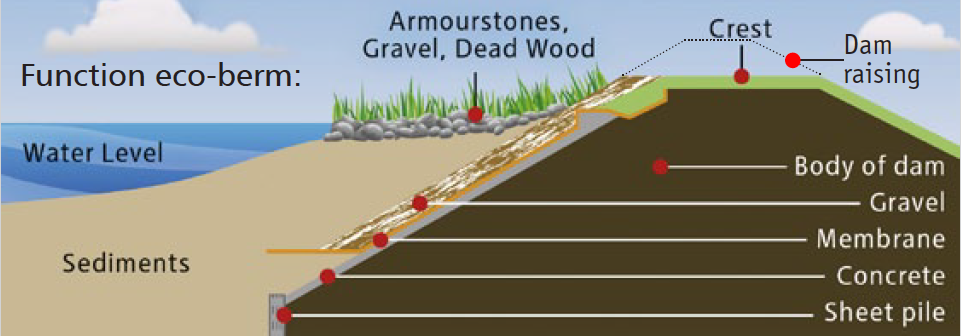
The construction of the eco-berms consisted of two parts. The first part focuses on infrastructural measures, i.e. on the restoration, the raising and the sealing of the dam. Part two consists of ecological measures that guarantee the ecological improvement of the dams and the reservoir. Source: Inadar.eu

New habitats for flora and fauna. More natural river bank areas, islands and deadwood structures were built in to provide new habitats for flora and fauna and as shelter for juvenile fish. Source: Inadar.eu
HOW IT WORKS
Before the start of the INADAR project, LEW Wasserkraft tested the method of eco-berms at three small test sites in 2016, each 30 meters long, on the Upper Danube (close to the power station of Günzburg). These tests were promising and showed a visible enhancement of the reservoir as a recreational area and an ecological improvement by creating new habitats for animals and plants.
Within the framework of the LIFE project INADAR which was scheduled for a duration of three years, two pilot areas were set up to comprehensively test the eco-berms and evaluate the impacts of the intervention.
The pilot sites are located near the power plants (KW) Offingen and Oberelchingen along the river Danube, owned by Obere Donau Kraftwerke AG (ODK). ODK is also the project’s financing partner. At Offingen, an eco-berm was installed over a distance of 500 metres in order to remediate the dam and to improve the ecological situation. In addition to this, at the pilot area at Oberelchingen, the dam was raised.
The construction of the eco-berms consisted of two parts. The first part focuses on infrastructural measures, i.e. on the restoration, the raising and the sealing of the dam. Part two consists of ecological measures that guarantee the ecological improvement of the dams and the reservoir. More natural river bank areas, islands and deadwood structures were built in to provide new habitats for flora and fauna and as shelter for juvenile fish.
Based on the positive experiences and results during the implementation of the project, LEW Wasserkraft has successfully implemented the eco-berm approach at other sites along the rivers Danube and Lech, and they are planning on implementing the approach at additional sites in the future.
Source: inadar.eu
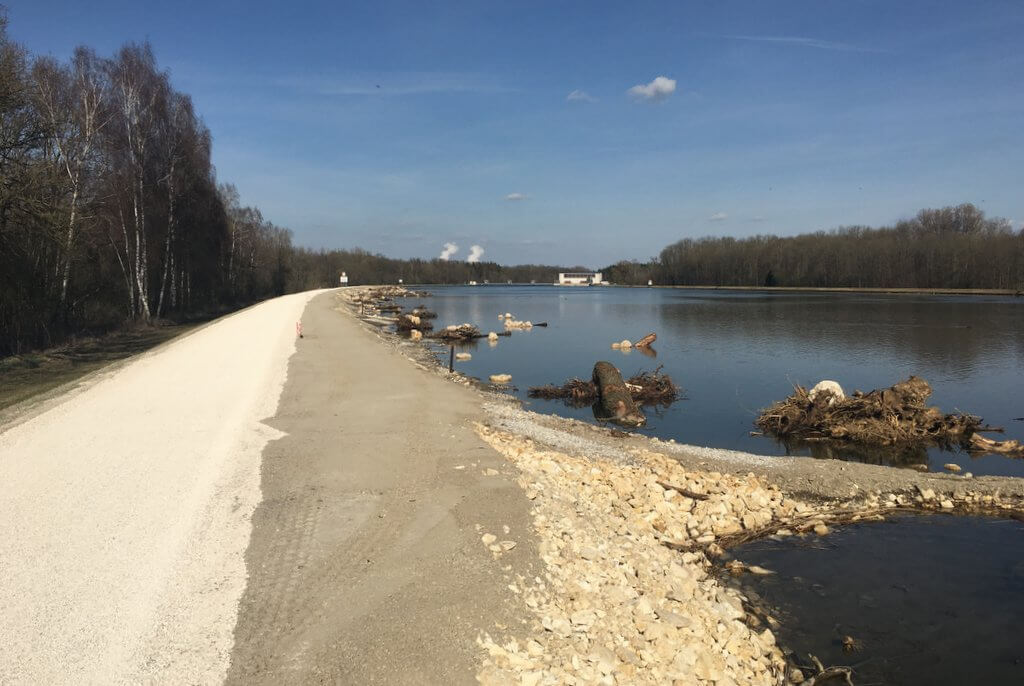
The banks of most water bodies containing dams are covered with wave breakers made of concrete. These dams have a negative impact on the environment, reducing biodiversity and harming habitats. The LIFE INADAR project team took an alternative approach when widening and elevating riverbanks near two hydropower stations in Germany. They replaced concrete slabs with ‘eco-berms’ which are made of materials like stones, sediment and dead wood. Source: Inadar.eu
ADVANTAGES AND BENEFITS FOR THE ENVIRONMENT
Ecology
At least 2 ha of valuable habitats for fauna and flora were created.
The number of fish species increased from 8 to 17 and the number of individual fish increased by factor 8 at the site in Offingen.
3 endangered species were already found in the new habitats.
The number of plant species has increased by approx. 25, including some endangered species.
There was no impact on the existing alluvial forests – 4.000 m2 have been saved.
Social aspects
All stakeholders support the approach.
The project has created a win-win situation for all parties involved.
The accessibility and quality of the river for recreational activities has increased.
Technology and economy
The eco-berms were successfully implemented on a total length of 1 km.
Dam restoration/elevation and implementation of the “ecological potential” were both accomplished in one working step.
The eco-berms are proven to be safe in terms of dam stability and flood protection.
Construction costs have been significantly lower than in the traditional approach.
Climate
CO2 emissions, normally generated by the transport of materials and concrete production, were reduced.
The INADAR project has been nominated for the EU’s LIFE Awards 2021 in the environment category. To learn more about the Citizens’ Prize, click here. To learn more about the wider LIFE Programme, click here.
Taken from: BrightVibes.